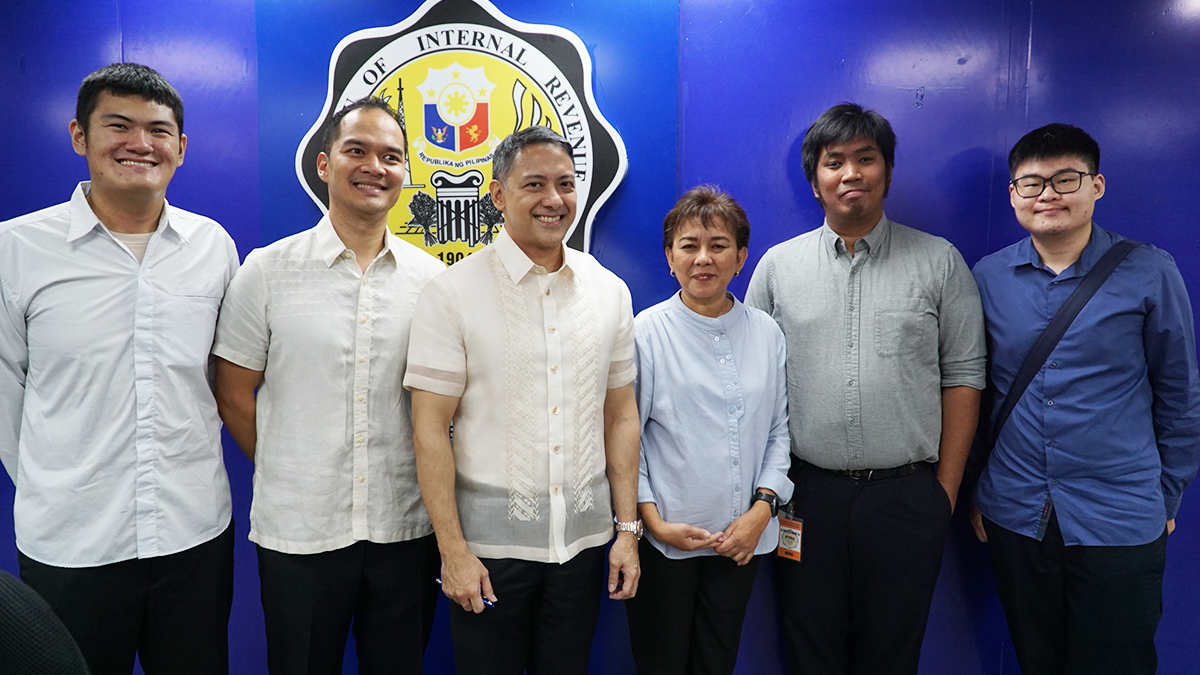Bureau of Internal Revenue partners with Ateneo's Department of Mathematics to combat ghost receipts
07 Aug 2024

The Bureau of Internal Revenue (BIR) announced that it had partnered with the Department of Mathematics of Ateneo de Manila University's School of Science and Engineering to develop an algorithm to detect companies possibly using ghost receipts to evade VAT payments.
The BIR's Run After Fake Transactions (RAFT) task force had gotten the assistance of two BSM-AMF graduates from Batch 2024—Mr Marky Erwin Chua and Mr Patrick Moll—who had developed the algorithm as part of their capstone project “Exploring Semi-Supervised Learning Methods for Tax Fraud Detection Using Philippine Tax Data.” Dr Elvira de Lara-Tuprio and Dr Jeric Briones were their advisers during the project.
"The BIR is grateful for the algorithm developed by talented students of the Ateneo de Manila University - Math Department," stated Atty Romeo D Lumagui, Jr, BIR Commissioner, during a press conference on Tuesday, 6 August 2024. "This algorithm empowers the BIR to identify Ghost Receipts through Mathematics and data analytics."
"The magnitude by which Ghost Receipts have become part of the Philippine economy is alarming, due to the lack of detection and enforcement for the past decades," Commissioner Lumagui added. "That ends now."
Commissioner Lumagui obtained his Juris Doctor degree from the Ateneo School of Law in 2005.
The use of ghost receipts is a scheme used to avoid having to pay the 12 percent output value-added tax (VAT) owed from sales of their products on retail. Here, syndicates set up ghost corporations that have no legitimate products of their own, but instead sell ghost receipts to businesses looking to falsify transactions and avoid paying taxes. The input VAT that's supposedly already "paid" from these ghost receipts is then deducted from the output VAT the company pays to the BIR, resulting in lost tax revenue.
According to Commissioner Lumagui, around ₱500 billion in tax revenue has been lost to ghost receipts, contributing a significant part of the country's ₱2.639 trillion VAT deficiency.
Prior to the development of Mr Chua and Mr Moll's algorithm, the BIR's RAFT task force would need to search for these ghost receipt syndicates and conduct actual raids, just to get data on which companies were buying ghost receipts from them. With the new algorithm, however, the task force does not need to conduct raids anymore before auditing companies—the algorithm can instead be applied to the BIR's existing database to detect companies that may likely be using ghost receipts.
Commissioner Lumagui stated that, with the algorithm, the BIT now has "the capacity to identify Ghost Receipts. Buyers, Sellers, Corporate Officers, and Accountants that are behind this economic sabotage will be held liable," Commissioner Lumagui stated.









